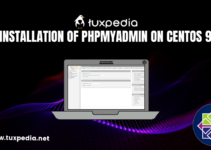Janus WebRTC Server is described as “Janus is a WebRTC Server developed by Meetecho conceived to be a general purpose one. As such, it doesn’t provide any functionality per se other than implementing the means to set up a WebRTC media communication with a browser, exchanging JSON messages with it, and relaying RTP/RTCP and messages between browsers and the server-side application logic they’re attached to.”
This article describes the installation procedure of Janus WebRTC Server on CentOS 7. Being a very complex and long process it is necessary to write on this due to the problems I faced during the installation of Janus on CentOS 7. Therefore, I documented all the steps and am sharing this with you guys to make life easier for you.
I am assuming that you are using a fresh server to install Janus WebRTC, however, if you are not, then please Do not forget to take a backup of your server if it is in production.
Let’s begin by updating the system.
sudo yum update
Enable the EPEL Repository.
sudo yum install epel-release
Now, we need to install the dependencies for Janus WebRTC.
Installation of Janus Dependencies using YUM and DNF
# Dependencies to be installed using yum. sudo yum install openssl-devel glib2-devel opus-devel dnf libcurl-devel doxygen nginx dnf-plugins-core wget git meson ninja libmicrohttpd-devel libsrtp-devel libogg-devel libconfig-devel install jansson-devel libcurl-devel pkgconf-pkg-config libtool autoconf automake graphviz centos-release-scl yum-config-manager --enable rhel-server-rhscl-7-rpms yum install devtoolset-7 openssl11 scl enable devtoolset-7 bash # Download and Install dnf forensics repository. wget -c https://forensics.cert.org/cert-forensics-tools-release-el8.rpm rpm -Uvh cert-forensics-tools-release-el8.rpm # Dependecies to be install using dnf forensics repository. dnf --enablerepo=forensics install gengetopt
Installation of Janus Dependencies using Source Code
1. sofia-sip
cd /opt wget -c https://downloads.sourceforge.net/project/sofia-sip/sofia-sip/1.12.11/sofia-sip-1.12.11.tar.gz tar -xvf sofia-sip-1.12.11.tar.gz cd sofia-sip-1.12.11 ./configure make make install
2. libnice
cd /opt git clone https://gitlab.freedesktop.org/libnice/libnice.git cd libnice meson builddir ninja -C builddir ninja -C builddir test ninja -C builddir install export PKG_CONFIG_PATH=/usr/local/lib64/pkgconfig
3. libsrtp
cd /opt wget https://github.com/cisco/libsrtp/archive/v2.2.0.tar.gz tar xfv v2.2.0.tar.gz cd libsrtp-2.2.0 ./configure --prefix=/usr --enable-openssl make shared_library && sudo make install
4. usrctp
cd /opt git clone https://github.com/sctplab/usrsctp cd usrsctp ./bootstrap ./configure --prefix=/usr && make && sudo make install
5. libwebsockets
cd /opt git clone https://libwebsockets.org/repo/libwebsockets cd libwebsockets git checkout v2.4-stable mkdir build cd build cmake -DLWS_MAX_SMP=1 -DCMAKE_INSTALL_PREFIX:PATH=/usr -DCMAKE_C_FLAGS="-fpic" .. make && sudo make install
6. libpaho
cd /opt git clone https://github.com/eclipse/paho.mqtt.c.git cd paho.mqtt.c make make html make install
7. cmake
cd /opt wget https://cmake.org/files/v3.12/cmake-3.12.3.tar.gz tar zxvf cmake-3.* cd cmake-3.* ./bootstrap --prefix=/usr/local make -j$(nproc) make install
8. rabbitmq-c
cd /opt git clone https://github.com/alanxz/rabbitmq-c cd rabbitmq-c git submodule init git submodule update mkdir build && cd build cmake -DCMAKE_INSTALL_PREFIX=/usr .. make && sudo make install
Installing Janus
cd /opt git clone https://github.com/meetecho/janus-gateway.git cd janus-gateway ./configure --prefix=/opt/janus make make install make configs
Configuring Janus
Edit the Janus configuration File.
vi /opt/janus/etc/janus/janus.jcfg # Uncomment the following line daemonize = true # Uncomment the following lines and enable Stun Server. stun_server = "stun1.l.google.com" stun_port = 19302 # Uncomment the following lines and enable Turn Server and change TURN server to following (You may create your own account on numb.viagenie.ca - They provide free TURN Services) turn_server = "numb.viagenie.ca" turn_port = 3478 turn_type = "udp" turn_user = "XXXXXXXXX" #### Create your own account turn_pwd = "XXXXXXXXX" #### Enter password which u used while creating account
Enable HTTP / HTTPS Server
vi /opt/janus/etc/janus/janus.transport.http.jcfg # set the following http = true https = true
Now start Janus WebRTC Server using the following command.
/opt/janus/bin/janus
Configuring NGINX Web Proxy to access Janus Demo Content
NGINX has been already installed above, furthermore, to access demo content we can use any Web Server. However, to configure NGINX perform the following steps.
Edit the NGINX configuration file.
vi /etc/nginx/nginx.conf # Check to see if enabled on Port 80 listen 80 default_server; # Set the server name server_name janus.tuxpedia.net; # Replace with your hostname
Copy demo data to NGINX Document Root.
cp -Rv /opt/janus/share/janus/demos/* /usr/share/nginx/html
Restart NGINX
service nginx restart
Install Let’s Encrypt SSL
apt-get install software-properties-common add-apt-repository universe add-apt-repository ppa:certbot/certbot apt-get update apt-get install certbot python-certbot-nginx certbot --nginx
Now you can access Janus WebRTC on https://janus.yourdomain.com. You will be able to access all Demo Content with complete WebRTC functionality.
Final Thoughts on Janus WebRTC
After installation of Janus WebRTC, you can play around with the Demo Plugins and get an idea of how you will be using it for your own requirements.
Explore more posts related to CentOS here.
[rb_related title=”You May Also Like” total=”2″]



